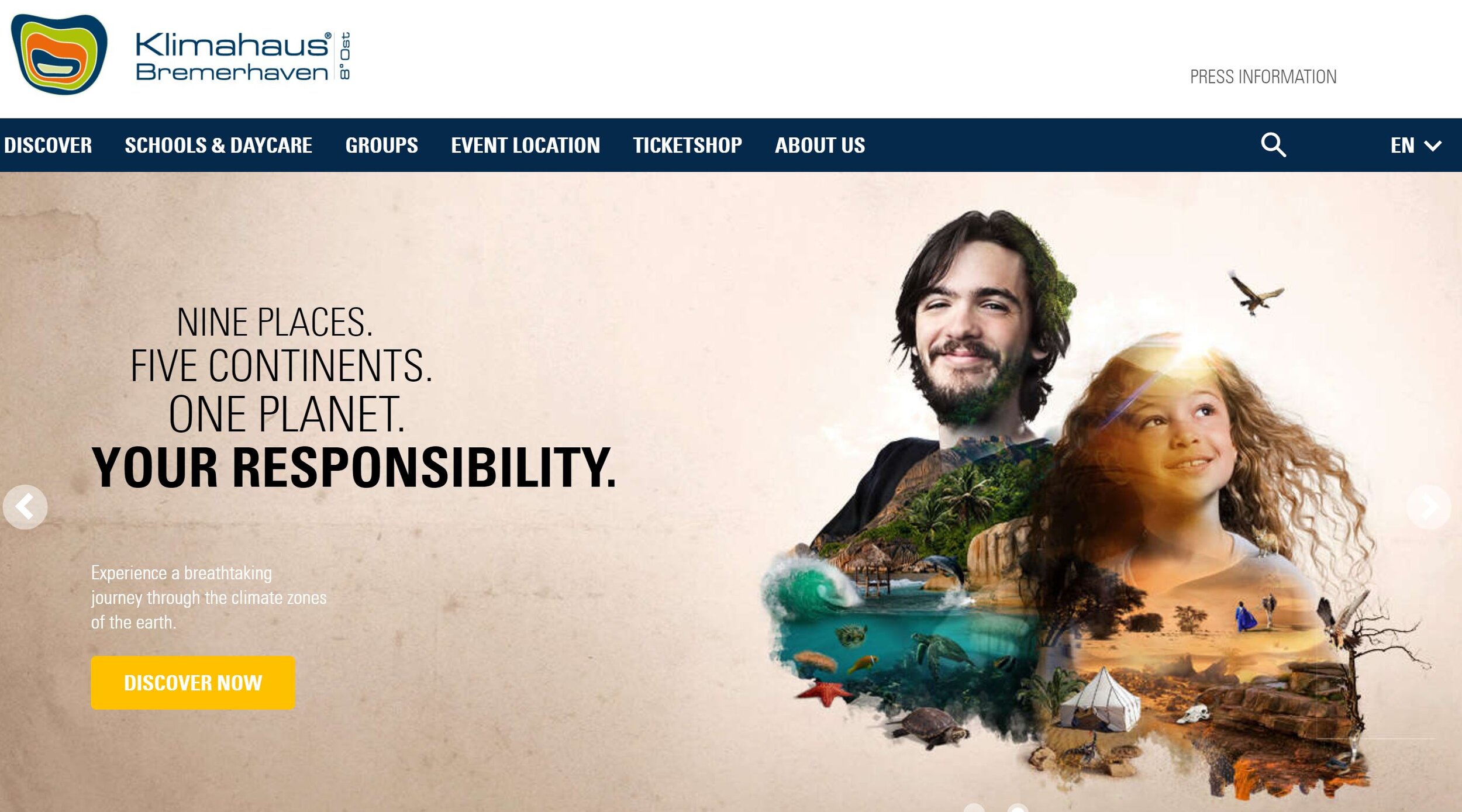Museums of climate change
For a survey of climate change museums, see this recently-published paper:
Jenny Newell, ‘Climate museums: powering action’, Museum Management and Curatorship, Vol. 35, 2020 - Issue 6: Special issue: Museums and climate action. Guest Editor: Joy Davis. Pages 599-617 | Published online: 23 Nov 2020. https://doi.org/10.1080/09647775.2020.1842236
Jockey museum of climate change, hong kong
The Jockey Club Museum of Climate Change, funded by The Hong Kong Jockey Club Charities Trust, was established in December 2013 at The Chinese University of Hong Kong (CUHK). It is the first museum of its kind in the world, offering an interactive, multimedia exhibition that showcases valuable collections and information about climate change. It is the ideal venue for the public, especially students and teachers, to champion the cause of environmental stewardship and keep themselves abreast of the latest developments on environmental conservation and sustainability. Extended activities of the museum exhibition include an eco-tour of the prime ecological sites and green facilities on CUHK campus, and a variety of workshops and activities that promote green living.
Vision The Jockey Club Museum of Climate Change strives to become a recognized, valued contributor to positive changes in knowledge, attitudes and behaviour in relation to climate change throughout Hong Kong and beyond.
Museum of tomorrow, rio
A new icon of the modernization of Rio de Janeiro’s harbor, the Museum of Tomorrow was born in the Praça Mauá as a science museum meant to explore, imagine, and conceive all the possibilities for constructing the future.
An experimental museum, where the content is presented through a narrative that combines the accuracy of science with the expressiveness of art, using technology as a support in interactive environments and audiovisual and gaming facilities created from scientific studies conducted by experts and data released all over the world.
Designed by the Spanish architect Santiago Calatrava, the building - whose organic shapes were inspired by the bromeliads of the Botanic Garden of the city - occupies an area of 15 thousand square meters, surrounded by reflecting pools, gardens, a bike lane, and a leisure area, all adding up to 34.6 thousand square meters of the Píer Mauá.
climate museum, new york
Our mission is to inspire action on the climate crisis with programming across the arts and sciences that deepens understanding, builds connections, and advances just solutions.
The climate crisis is the defining challenge of our time. We must rise to meet it together.
The Climate Museum is creating a culture for action on climate, inviting people from all walks of life into the conversation and building community around just solutions. Most people in the US are worried about the climate crisis, but silent and inactive. Building on the popularity and trust held by museums, we bring people together to learn about solutions and join the fight for a brighter future, providing multiple pathways into civic engagement.
Klimahaus Bremerhaven 8° Ost
The Klimahaus Bremerhaven 8° Ost is more than just a museum. It is a unique world of weather, climate and climate-change knowledge and experience. On an exhibition space of 11,500 m2, guests can visit the different climate zones along the eighth longitude east, experience the connection between weather and climate, and investigate the causes of climate change. In an exciting and impressive way, the Klimahaus in Bremerhaven demonstrates how each individual can contribute to climate protection.
We reveal the diversity of our blue planet, the connection between weather and climate, climate change in history as well as a prognosis for the future in our independent exhibition areas – The Journey and Perspectives. Space installations and elaborate scenes, interactive exhibits and media stations are just as much part of the Klimahaus exhibition’s concept as living animals and plants.
(Illustration: Lund Hagem
Source: http://www.nhm.uio.no/klimahuset/)
KLIMAHUSET, Oslo
Planning on opening in 2019, Climate House (Klimahuset) is a University of Oslo project that will create an environmentally friendly space for "research-based exhibitions, lectures, films, debates and experiences related to (the) climate and climate change". A design competition for the project was won by a collaboration between Lund Hagem, Atelier Oslo, and Expology.
According to Expology's Managing Director Gordon Ryan, "The Climate House invites us to observe change and it will inspire change". The goals of Climate House are therefore to raise awareness about climate change in our world through answering questions such as, "what is climate change?" The project will thus inspire and engage its visitors in their pursuit of sustainable futures.
Read more from Expology on Climate House at https://www.expology.com/press/.
(Source: http://www.museumofwater.co.uk/)
Museum of Water
"Museum of Water is an invitation to ponder our precious liquid and how we use it.
Begun in a time of relative plenty in Britain, the Museum is travelling across the world gathering collections of water for future generations to consider.
Water is our most basic need and our most overlooked, throwaway substance. We choose water metaphors to define our thoughts, while in our actions we defend against it, squeezing and pumping it, chlorinating and piping, soothed by our certainty that it will pour from our tap at a twist of our fingers.
It is time to re-examine our connection with the water that surrounds us, and develop a new relationship. We need to hold on to water, consider what is precious about it and how we are using it now in order to explore how we might save it for the future. We are all implicated in this.
Museum of Water has travelled to over 50 different sites worldwide, been visited by over 60,000 people, and currently holds over 1,000 bottles in the collection."







